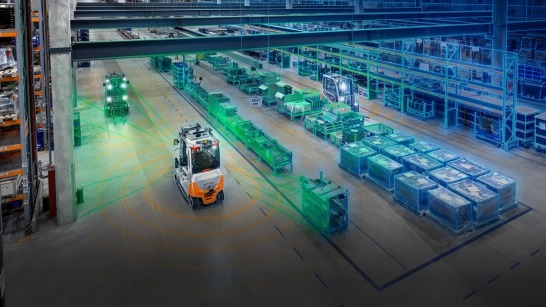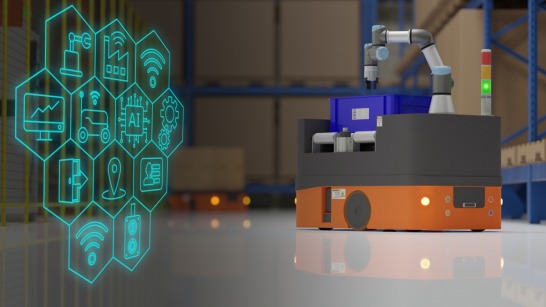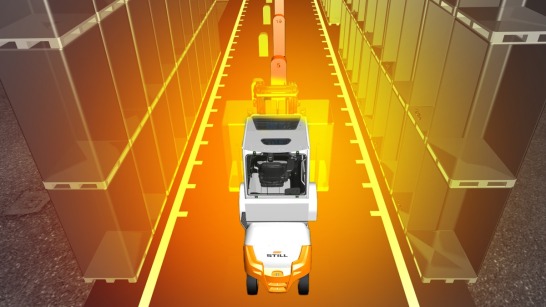Joachim Tödter, Senior Director Technology & Innovation, has been instrumental in shaping and driving the company forward in this area for a number of years. He knows: The entire industry is facing a paradigm shift away from rigid systems towards dynamic, open, and AI-driven processes. Neural networks are also growing in importance. He explains what this means in this interview.
Mr. Tödter, when did you start exploring the future of KION?
Around 20 years ago, I worked in advance development. Back then, there were a number of forward-thinking sales colleagues that were working in close cooperation with customers and they firmly believed that the future lies in the realm of flexible automation. I took their ideas seriously and, very early on, we started creating future-oriented solutions. As early as 2008, we supplied a customer with a pilot project that was well-ahead of its time; an adjustable rack system with shelf heights of up to eight meters that utilized hybrid operation, combining manual and automated processes.
So, has automation advanced since those early days?
Yes, it’s important to understand that Automated guided vehicles have existed in some form for around 30 years. However, commissioning each system represented its own unique challenge and any modifications to these systems required considerable configuration. This is where we come in: Advanced sensors and sophisticated hard- and software solutions make vehicles more flexible in their deployment. In the future, we’ll be able to completely do away with the initial setup process because forklift trucks will be able to adjust and orient themselves autonomously. As warehouse inventories change, the machine is able to recognize this and “think” accordingly. The trend is moving away from fixed automation to increased flexibility. A good example of this is STILL’s involvement in the “IMOCO under Industry4.E” project. This project is aimed at fitting AGVs (automated guided vehicles) with state-of-the-art sensors and AI to enable them to move autonomously through the warehouse and avoid any obstacles. Cameras, radar, and laser scanners play a crucial role in this process, and, with the help of artificial intelligence, AGVs can classify surrounding objects.





